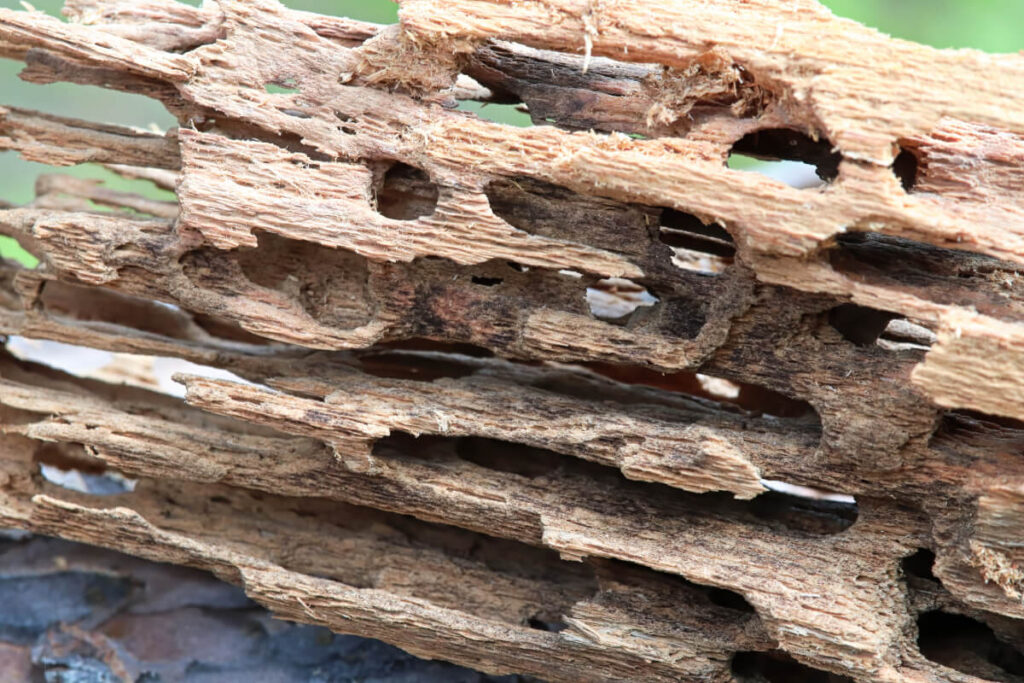
Carpenter ants are wood-destroying insects that usually build colonies outdoors, but there are times when these critters move inside a building. This happens when the environmental conditions outside start becoming harsh for them. Unfortunately for homeowners, even new houses can be infested with carpenter ants.
So why would a newly constructed home have carpenter ants? Carpenter ants can invade new homes if their main colony is nearby or the place has been infested with pests before. They also become attracted to the property if there’s an overaccumulation of moisture in the house, there are unsealed holes in the walls, or the construction crew had poor sanitation practices. Luckily, hiring a pest control company before the construction or moving in greatly helps in keeping these household pests at bay.
According to the National Pest Management Association, ant infestations are quite common in residential properties like apartments (82%) and single family homes (80%) because these buildings have open food sources that the ants need to survive. One of the most common species of ants that infest homes is the carpenter ant.
Carpenter ants are the black, red, or brown ants that burrow through the wooden structures of a home. But contrary to what most people think, these pests don’t eat the wood they attack like termites. Instead, carpenter ants create smooth tunnels and galleries inside the wood for their satellite nests.
Although carpenter ants usually attack rotting, water-damaged, or decayed wood, they may also chew through healthy, undamaged wood. It’s not uncommon for homeowners to find a few carpenter ants in their newly built home because of the following reasons:
There isn’t such a thing as an “empty land” because even vacant lots may have weeds, ants, termites, mice, and other organisms that stay there for resources and territory. Even when someone declares the property fit for a construction site, the place still needs to be cleared of any pest or organism present to avoid infestations in the future.
Carpenter ants usually build the main ant colony outdoors but they might move into a nearby building if the environmental conditions become harsh for them or if they’re in search of food and water sources. If there happens to be a parent colony of carpenter ants near the construction site of your new home, then it’s only a matter of time before these pests discover the wood in your home and build a new nest there.
Standing water is also attractive to ants and other pests like ticks and mosquitoes near the house. These pools of water usually form in several ways like broken gutter systems, leaking hoses and spigots, rainwater in the compacted ground and leaf litter, leaking air conditioners, and leaking pipes from the plumbing system. Addressing these moisture problems is extremely important because they may lead to rotting wood and severe pest problems if left alone.
When installing electrical and plumbing systems, the construction crew needs to dig holes and create gaps on the walls where pipes or wires need to pass through. Normally, these holes are patched up before the homeowners move in because they might serve as entry points for different types of pests like ants, rodents, and cockroaches.
Another possible reason for the sudden carpenter ant infestation in a new home is the poor sanitation of the people who worked in constructing the building. Abandoning food containers in the property attracts ants and other pests into the site. It might even attract other wildlife nearby like raccoons, coyotes, and feral cats and dogs. The construction equipment and containers also provide harborage for these pests, allowing them to establish a nest or colony early on.
Since no vacant lot is truly empty, property owners are often advised to hire a pest control company before breaking ground to clear the site of the existing pest population there. When the construction site is adjacent to other residential properties, some of the pests may infest the nearby areas if the pest control of carpenter ants and other pests isn’t performed first. Because of this, many states and cities in the country require their residents to hire a pest management professional before breaking ground and starting construction.
An existing ant infestation may even delay home construction because these pests may defend the site from construction. There might be multiple colonies or nests in the area that prevent the construction crew from getting started on the project. These ants might also attack the wood in the site even before the construction is completed so it’s better to have the place treated for infestations early on.
Carpenter ants and other ant species usually resurface right after the construction and when everything seems quiet. It’s difficult to keep the worker ants from entering the house, but there are a few ways to minimize their appearance on the property with preventive steps like:

Carpenter ants are destructive pests that weaken the foundation of a building, even a newly built house. They find wooden structures and burrow there to create a new carpenter ant nest for their colony. You can confirm a suspected carpenter ant infestation in the property by checking for these signs:
Anyone who isn’t familiar with insects and pests easily makes the mistake of identifying common black ants as carpenter ants and vice versa. However, these ant species have apparent differences that become more obvious with a closer look. For one, carpenter ants are about 5 times bigger than common household ants at 5/8 of an inch long. These pests are also easy to identify because of their heart-shaped heads and the presence of a single node below their thorax.
You might also spot flying ants around spring or fall during their mating season. The flying ants or “alates” are a bad sign because this means they’re building a nesting colony nearby. Even if you don’t find the live swarmer, shed wings of the ants are still an alarming sign for you to call a pest management professional.
Unlike termites that eat wood, carpenter ants only burrow through the wooden structures to build their nests. However, the damage they cause may still cost homeowners thousands of dollars in repair if left unchecked.
One of the most obvious signs of carpenter ant damage is the accumulation of sawdust at the edge of floors, window sills, and wall voids made of wood. These pests create tunnels inside the wood by chewing through the damp wood inside. They also like to keep the galleries they create clean so they push everything out of their way and into the open areas.
The frass or wood shavings created by these pests are usually composed of coarse sawdust, droppings, dead insects, ant body parts, and other things that get in their way as they burrow. The wood shavings may cause breathing problems when suddenly inhaled, so make sure to sweep them cautiously.
It’s also important to target the root of the carpenter ant issue so make sure to get rid of these pests using effective pest control methods before they cause even more structural damage.
As the carpenter ant colony grows inside the infested walls, there’s a chance that their rustling noises are heard as they burrow into the wood. The sounds are usually more noticeable at night when it’s quiet. When checking the walls for the rustling sound of carpenter ant activity, try knocking on the surface to see if the structure sounds hollow. Doing so can help you gauge how bad the damage is inside the walls.
Before calling a pest control professional, most homeowners try eliminating the pests with homemade remedies first. Mixing equal parts of water and vinegar makes an effective natural repellent that erases the pheromone trail of carpenter ants, leaving them confused as they try to find a stable food source or their way back to the colony. Meanwhile, other homeowners use homemade ant baits by combining sugar and baking soda in a shallow dish. The sugar lures the pests out of hiding while the baking soda kills them.
If the natural ant repellents don’t seem to put a dent in the carpenter ant population, then the infestation might be worse than expected. In such cases, it’s better to hire pest management professionals to assess the severity of the infestation and recommend extermination methods that get rid of the ants for good.

Carpenter ant infestations should be dealt with immediately before they start causing bigger problems in the property. If you’re looking for a reliable and professional pest control company to inspect the construction site of your home or to eliminate the pests in the newly built house, then our team at Yale Pest Control is ready to help out.
We have the right tools, knowledge, and training to provide you with the best extermination services for carpenter ants and other pests on the property. Give us a call today to know more about our services and request a free quote.